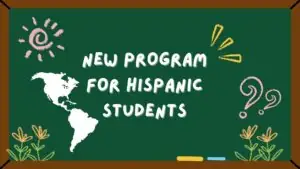When financial aid is a critical factor in college decisions for countless families, delays in the processing of the Free Application for Federal Student Aid (FAFSA) have led to frustration and uncertainty. In response, a number of colleges across the United States are taking matters into their own hands by introducing their own financial aid forms, as detailed in a report by Medora Lee for USA TODAY. This innovative approach aims to offer immediate clarity and support to students and their families, navigating the complexities of college financial planning.

✅ AI Essay Writer ✅ AI Detector ✅ Plagchecker ✅ Paraphraser
✅ Summarizer ✅ Citation Generator
Key Takeaways
- Several colleges have developed their own financial aid forms in response to FAFSA delays, providing estimates or guaranteed awards to aid students in decision-making.
- These forms, while not replacing FAFSA, are designed to mirror its requirements and offer a quicker turnaround for financial aid estimates.
- Schools like St. Louis University and Assumption University are at the forefront, with some extending their commitment deadlines to accommodate the delays.
- The initiative underscores colleges’ commitment to supporting students through the financial aid process, especially amidst technical challenges with the new FAFSA system.
The initiation of this movement by colleges was sparked by the Department of Education’s rocky rollout of a new, simplified FAFSA, which aimed to make the financial aid process more accessible but instead led to significant delays. With the federal system not expected to start sending out the necessary data for financial aid determinations until mid-March, colleges feared for the impact on students’ enrollment decisions. This situation is particularly pivotal as choosing a college is one of the most significant decisions for young adults and their families, both financially and for their futures.
The alternative forms provided by colleges aim to mirror FAFSA closely, requiring similar information but designed to be more accessible, with some being significantly shorter. For example, Assumption University in Worcester, Massachusetts, has streamlined its form to just 12 questions. The goal is to offer a more immediate estimate of financial aid, helping families make informed decisions sooner.
Despite these forms not replacing the FAFSA, they serve as a critical interim solution. Schools stress the importance of still completing the FAFSA for federal financial aid eligibility, with these institutional forms providing preliminary estimates or guarantees based on accurate family information. This dual approach ensures that students can secure institutional aid while awaiting federal assistance.
Implementation and Impact
Colleges implementing their own financial aid forms have seen varied approaches. Some, like Assumption University and St. Louis University (SLU), have guaranteed aid based on the information provided through their forms. Others offer estimates to guide families in their financial planning. The turnaround time for these estimates can be as quick as a week or two, a significant improvement over the FAFSA’s timeline.
This initiative has also seen colleges extending their commitment deadlines, recognizing the additional stress placed on families by FAFSA delays. Institutions like Columbia College in Chicago and Emerson College in Boston are giving families more time to make their decisions, reflecting a broader trend of flexibility in response to the FAFSA’s challenges.
Looking Forward
The innovative steps taken by colleges in introducing their own financial aid forms are not merely reactive measures to current FAFSA delays but also part of a broader vision for the future of financial aid administration. Institutions like St. Louis University (SLU) are leading the charge, considering long-term plans that could reshape the landscape of financial aid advice and preparation. SLU, for instance, has committed resources to develop, test, and market its own financial aid form with an eye towards a five-year plan. This initiative is not just about addressing immediate challenges but also about investing in future generations of students. The possibility of rolling out their financial aid form earlier than FAFSA’s traditional October 1st start date or using it as an educational tool for middle schoolers and high school freshmen and sophomores is being explored. Such efforts aim to demystify the financial aid process for younger students and communities that are under-resourced, preparing them early for the complexities of college financing.

Response to FAFSA Delays
The delays in the FAFSA rollout have prompted a reevaluation of admission and financial aid timelines across the board. Several colleges in the D.C. area and beyond have recognized the need for flexibility, extending their commitment deadlines to accommodate the uncertainty faced by students and families. This move allows prospective students additional time to receive and compare financial aid offers, ensuring they can make informed decisions without undue pressure. The table below provides a detailed overview of colleges that have extended their commitment deadlines, reflecting a collective effort to adapt to the challenges posed by FAFSA delays.
| 🎓 College | 📆 Extended Deadline |
| Allegany College of Maryland | May 1st |
| American University | May 1st |
| Anne Arundel Community College | Rolling deadline |
| Baltimore City Community College | Rolling deadline |
| Bluefield University | Rolling deadline |
| Bowie State University | June 1st |
| Carroll Community College | Rolling deadline |
| Catholic University | May 1st |
| Christopher Newport University | May 1st |
| Coppin State University | May 1st |
| Frostburg State University | June 1st |
| George Mason University | May 1st |
| George Washington University | May 1st |
| Georgetown University | May 1st |
| Goucher College | June 1st |
| Hampton University | May 1st |
| Howard University | May 1st |
| James Madison University | May 1st |
| Johns Hopkins University | May 1st |
| Liberty University | May 1st |
| Longwood University | May 1st |
| Loyola University Maryland | May 1st |
| Montgomery College | May 15th |
| Morgan State University | May 15th |
| Mount St. Mary’s University | May 15th |
| Norfolk State University | May 1st |
| Northern Virginia Community College | Rolling deadline |
| Old Dominion University | June 1st |
| Prince George’s Community College | Rolling deadline |
| Radford University | Rolling deadline |
| Regent University | June 1st |
| Salisbury University | May 1st |
| St. John’s College | May 1st |
| St. Mary’s College of Maryland | May 1st |
| Sweet Briar College | June 1st |
| Towson University | May 1st |
| Trinity Washington University | Rolling deadline |
| University of Baltimore | May 1st |
| University of Mary Washington | May 1st |
| University of Maryland Baltimore | May 1st |
| University of Maryland Baltimore County | May 1st |
| University of Maryland College Park | May 1st |
| University of Maryland Eastern Shore | May 1st |
| University of Richmond | May 1st |
| University of the District of Columbia | May 31st |
| University of Virginia | May 15th |
| Virginia Commonwealth University | Rolling deadline |
| Virginia State University | May 1st |
| Virginia Tech | May 15th |
| Virginia Union University | June 1st |
| Virginia Wesleyan University | June 1st |
| Washington and Lee University | May 1st |
| William & Mary | May 1st |
This comprehensive response from educational institutions reflects a deep understanding of the challenges prospective students face, coupled with a commitment to ensuring that financial uncertainties do not hinder their educational aspirations. By extending deadlines and exploring future financial aid solutions, colleges are taking significant steps to support students and families during this transitional period, reinforcing the importance of accessibility and flexibility in higher education.
Conclusion
The proactive steps taken by colleges in response to FAFSA delays represent a significant shift in how institutions support prospective students. By developing their own financial aid forms and extending commitment deadlines, these colleges are placing a greater emphasis on accessibility and support, ensuring that financial aid processes do not hinder students’ educational aspirations. As families navigate these challenges, the adaptability and commitment of educational institutions to their needs offer a beacon of hope and support in the complex landscape of college financial planning.
Follow us on Reddit for more insights and updates.





Comments (0)
Welcome to A*Help comments!
We’re all about debate and discussion at A*Help.
We value the diverse opinions of users, so you may find points of view that you don’t agree with. And that’s cool. However, there are certain things we’re not OK with: attempts to manipulate our data in any way, for example, or the posting of discriminative, offensive, hateful, or disparaging material.